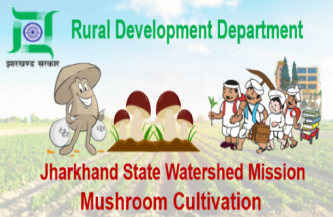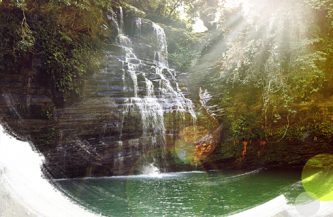Jharkhand State Watershed Mission–Integrated agriculture and fisheries with pond construction

Watershed Mission is the process of creating and implementing plans, programs, and projects to sustain and enhance watershed functions that affect the plant, animal, and human communities within a watershed boundary. Features of a watershed that agencies seek to manage include water supply, water quality, drainage, storm water runoff, water rights, and the overall planning and utilization of watersheds. Landowners, land use agencies, storm water management experts, environmental specialists, water use purveyors and communities all play an integral part in the management of a watershed.
Jharkhand is the land of trees, herbs, shrubs and varieties of bio-diversity with undulated topography and different land use pattern. Jharkhand is the ideal state to be taken up under Watershed Development Programme. Therefore, the Government of Jharkhand under the Rural Development Department has registered a State Level Nodal Agency as Jharkhand State Watershed Mission (JSWM) on 17/07/2009 under Society Registration Act 21, 1860 for implementation of Integrated Watershed Management Programme (IWMP) under Common Guidelines for Watershed Development Projects, Govt. of India 2008. The Government of Jharkhand has taken initiative under the new guidelines for implementation of watershed projects in the state.
The corners of the pond – In the north Parmeshwar Rama 2 acres, in the south – personal one acre, in the east – personal one acre, in the west – personal one acre . The total area of the pond = 100 * 100 * 10 . The total cost of the pond is 299000 (two Lakh ninety four thousand)
Chandan , a beneficiary demanded a new pond from Jogi Dhokar Nala Watershed Samiti and got the pond constructed on his land, in which Secretary , Vijay Ram and Chairman Mithilesh Yadav of Jogi Dhokar Nala Watershed Samiti, helped him in the construction of the pond. The site where the pond was constructed was an area where rain water could not be collected as there was slope and water could not be stopped or stored and water flowed with the slope to a long distance. After the pond was constructed water started to collect in the pond increasing the water level and crops like paddy and wheat started to be grown around there.
The land used to be deserted but due to this water management work, the apathy turned into happiness and greenery started to appear in the surroundings. Sanjay Ram who is a field coordinator at Garhwa says that at the time of making this report in the last week of May water in the pond is still at 3 feet.
Chandan Kumar, the owner of the pond, says that there is water for the pets and wild animals that come from far-flung areas to this pond. The pond is proving to be life-saving in during the summers. There is a small hillock at a short distance from this pond, in which wild animals live and the pond serves as a drinking water source for them also. During the summer, when wild animals feel thirsty, they go to the nearby village in the night in search of water and are hunted by dogs and men. But this pond proved to be a boon for those wild animals.
Fisheries are also done in this pond. If the government arranges for pump sets , the farmers would have benefited more as crops such as paddy, wheat, maize, tur, sesame, bundi, turi etc. are grown. If provision for fencing is done all types of crops grown during hot season could be grown here but due to the destruction of the crop by domestic and wild animals in the night, farmers are unable to sow crops grown in hot season.
These problems occur only in the summer days . Crops are fine during the rainy and winter days.
In this way, we can see that along with the creation of ponds for water management, domestic animals are also benefiting along with farming.





